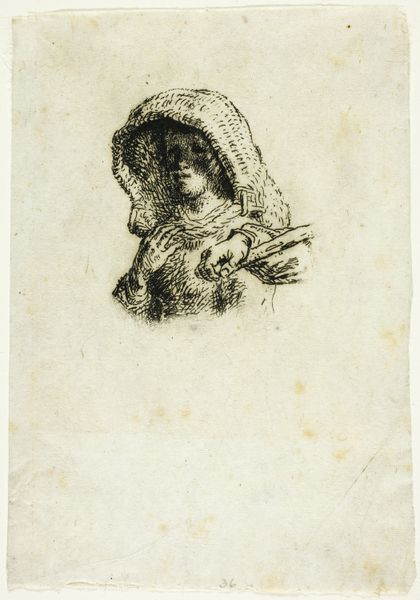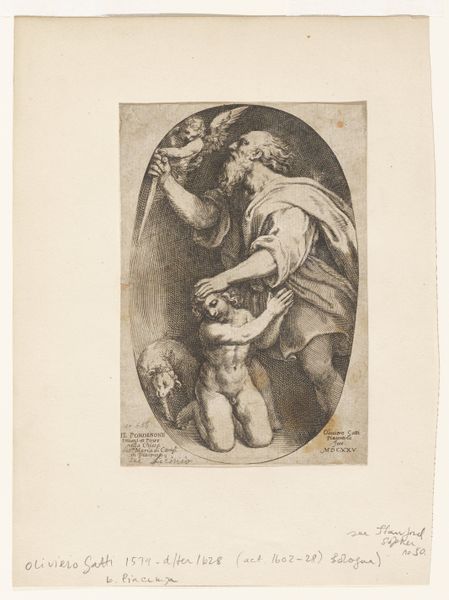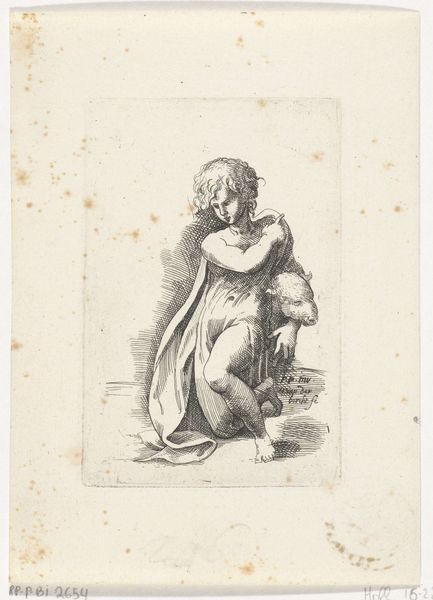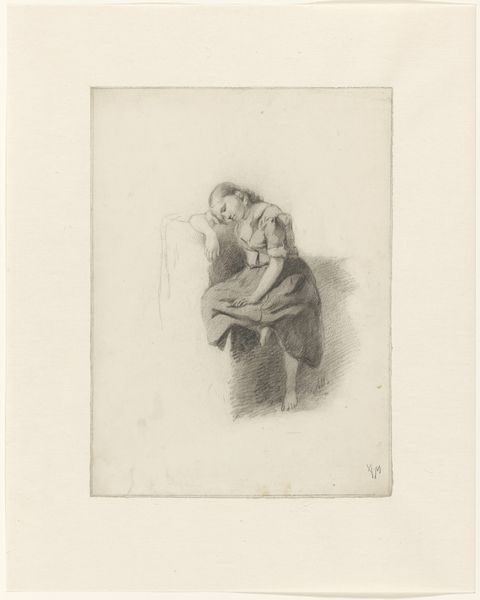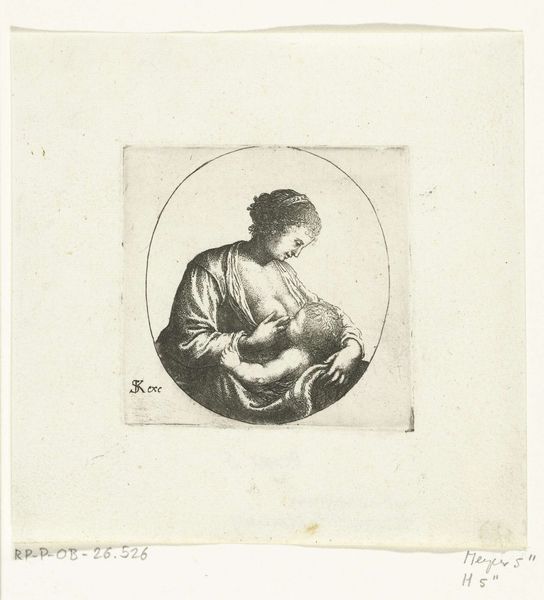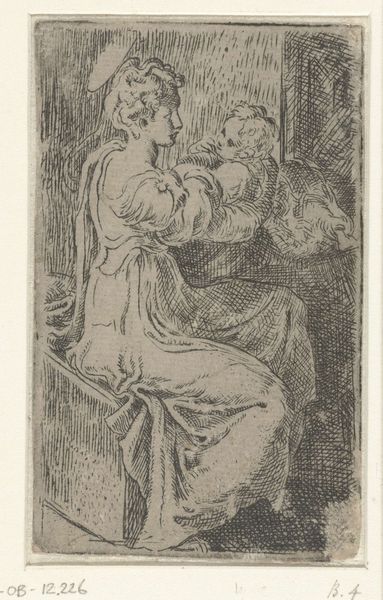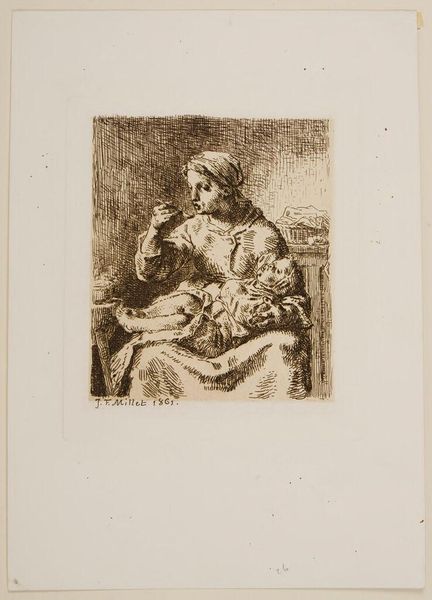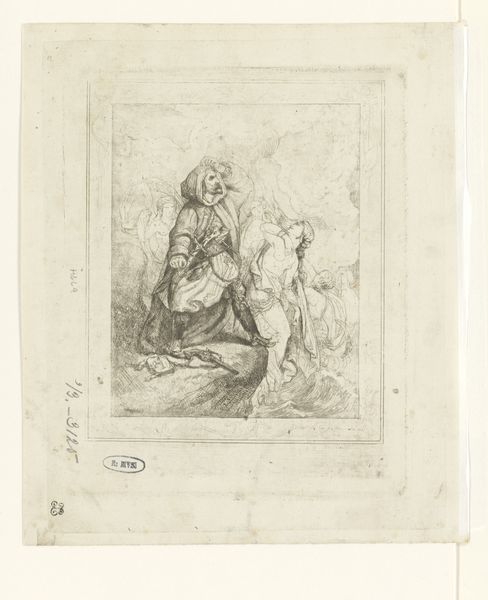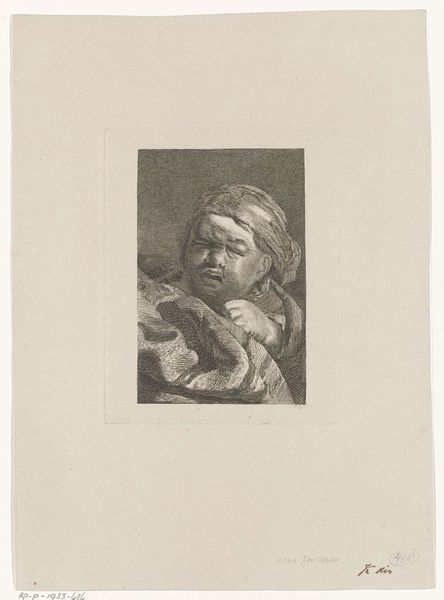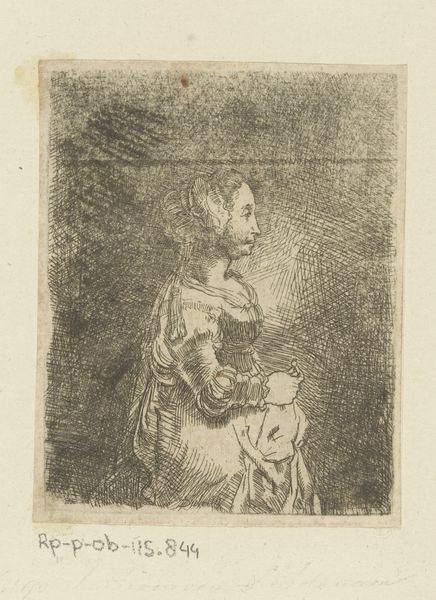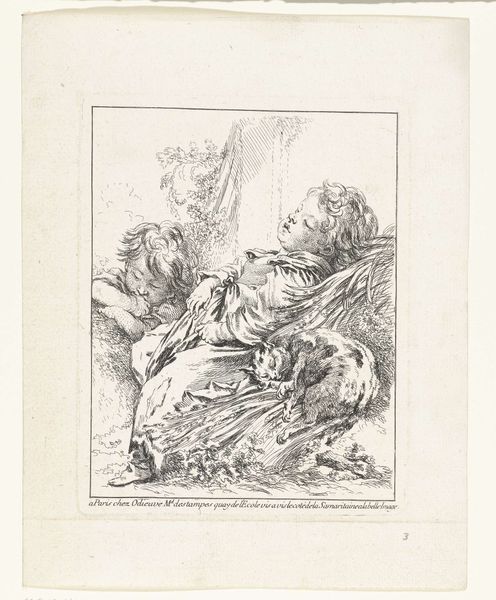
Dimensions: height 200 mm, width 136 mm
Copyright: Rijks Museum: Open Domain
Curator: Let’s turn our attention to "Jongetje met vogeltjes in zijn hoed", an engraving likely dating from around 1750 to 1800, created by G. van Citters. What are your first thoughts? Editor: There’s a disquieting tension. The young boy is depicted holding a hat with birds, but his expression doesn’t quite convey innocence or joy. The hatching is also pretty raw. It's quite fascinating actually! Curator: Indeed. It’s important to remember that engraving was a skilled, labor-intensive craft. The artist would have used a burin to cut lines into a metal plate. This allowed the image to be reproduced numerous times, reflecting broader trends in print culture and the growing market for imagery. How do you see the role of children in 18th-century European society? Editor: The portrayal of children, even in what appears to be a simple genre scene, is never neutral. Childhood itself became a complex site of ideological contestation, linked to class, labor, and social mobility. Is he holding those birds captive, or has he found them, injured, abandoned perhaps? The lack of detail and fine shading draws you into his gaze, but does not offer answers to any of these questions. Curator: The material tells us a lot too! The linear quality of the engraving emphasizes line over form, reducing the composition to only essential values of light and shadow. The very nature of reproductive prints complicates our ideas around authorship and originality in this period. Editor: Exactly. What does it mean to represent this particular child from this particular period? Whose narratives are highlighted and whose are suppressed? Also consider issues like accessibility, and consumption. We get to analyze representations of working-class and minor figures, even though they do not dominate the written historical record. The gaze of the child confronts our gaze directly. This work isn’t passively illustrative—it's a call for empathy. Curator: And as consumers of prints we should never take for granted what looks so simple or unremarkable on the surface! Thinking of how it was made can deepen the meaning. The act of physically inscribing an image into a copperplate inevitably informed the aesthetics and the conceptual underpinnings. Editor: Reflecting on the political and social context is also indispensable. Bringing together that materiality, production and socio-political milieu provides insights to deepen any viewers reading of it.
Comments
No comments
Be the first to comment and join the conversation on the ultimate creative platform.
